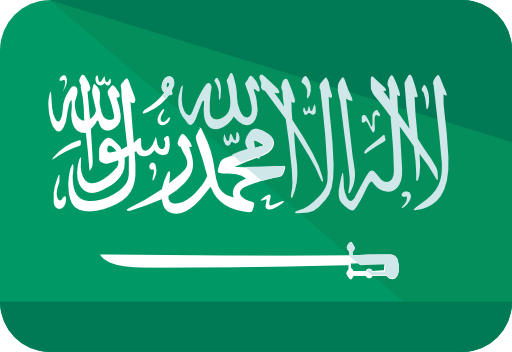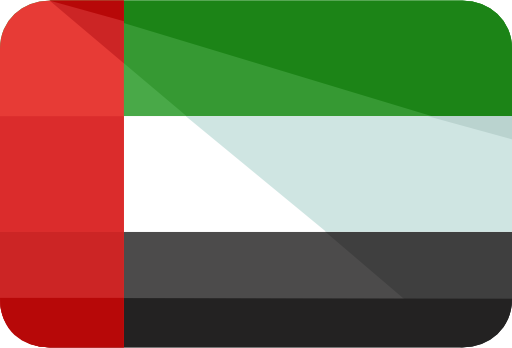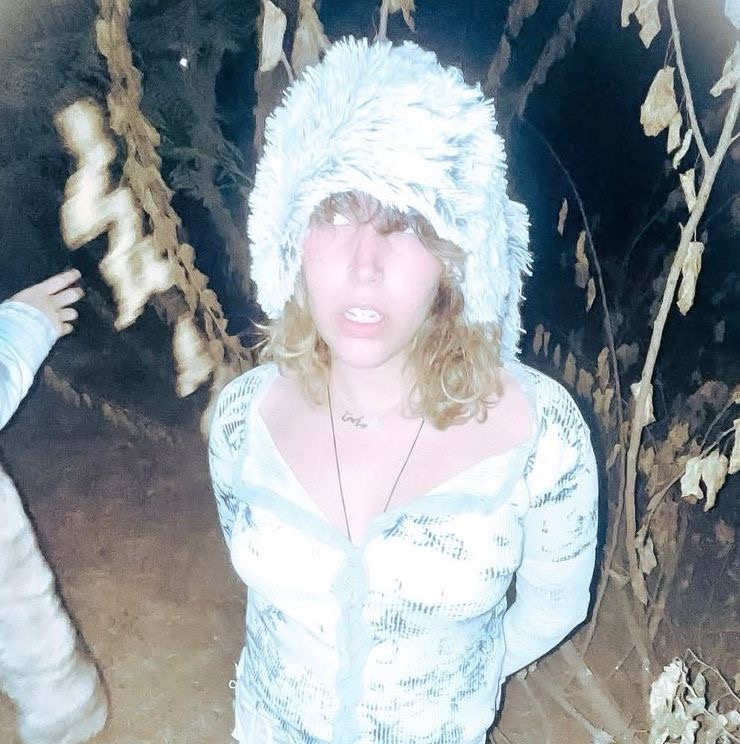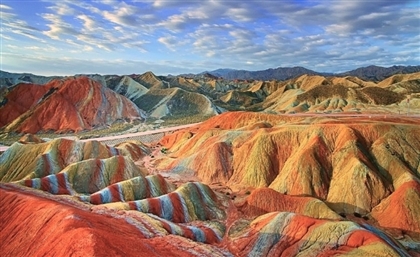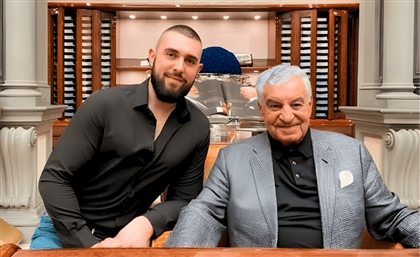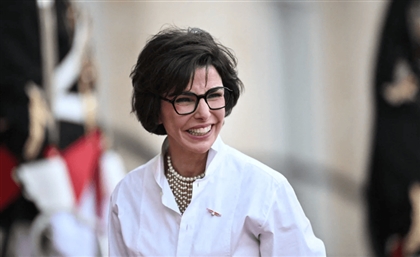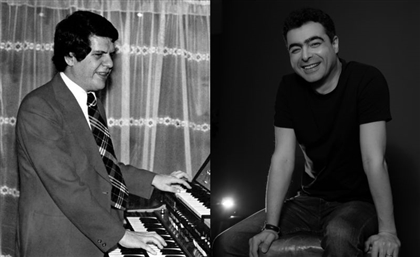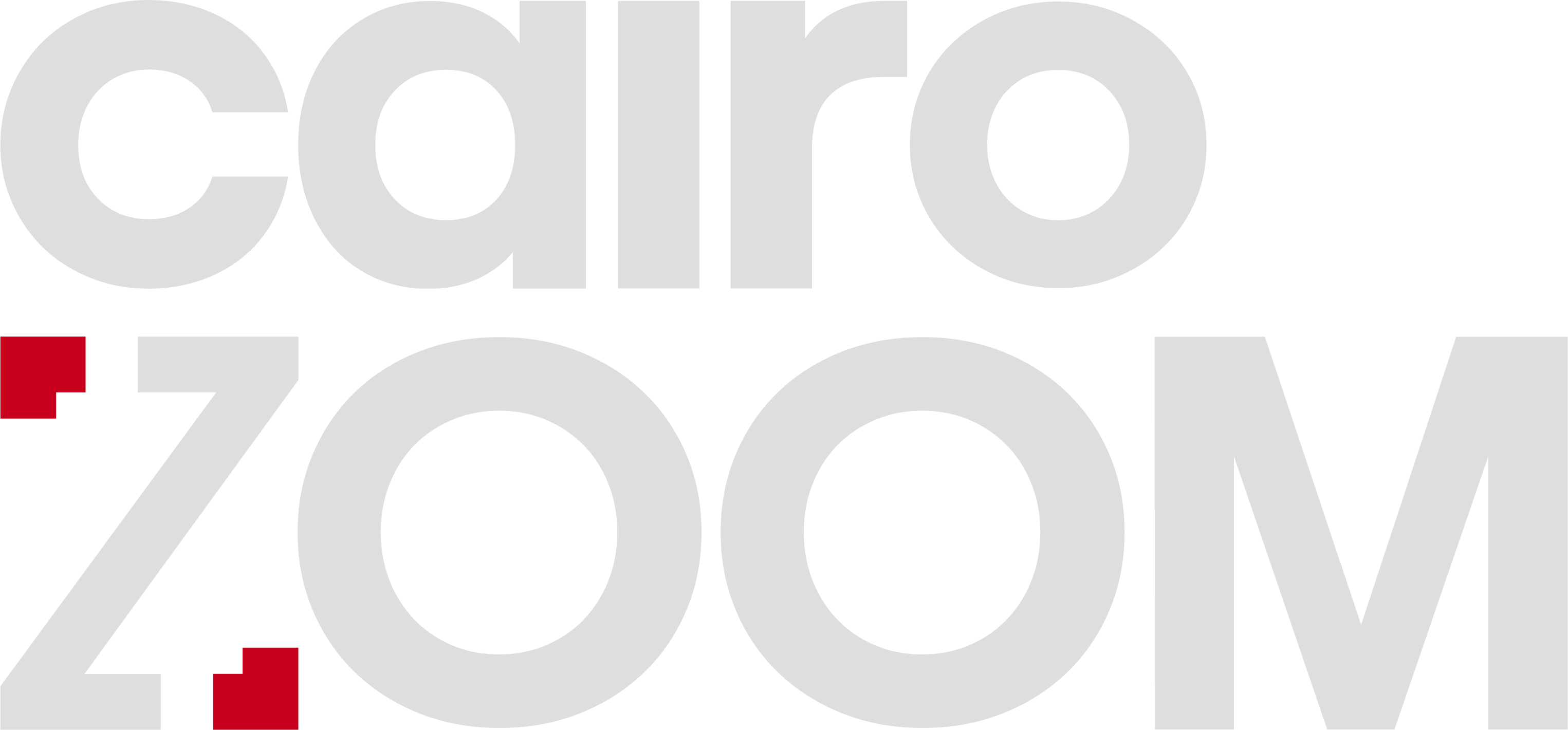Thomas Dillon Turns Painting Into an Act of Surrender
'The Raw and the Cooked' at Dubai's Opera Gallery invites viewers to a space where Thomas Dillon explores instinct, intuition, and the human condition.

Before Thomas Dillon paints, he breathes. He chants. He lights incense. He moves. In that quiet ritual - part meditation, part invocation - he begins to let go. The act is not about control but surrender. To rhythm. To accident. To something larger than the self.
Born in Staten Island in 1986 and now based in Philadelphia, Dillon is a self-taught painter whose creative life first unfolded through music and writing. “They taught me rhythm, pacing, and structure,” he says. “Painting, by contrast, collapses time. It delivers everything at once.” That sense of immediacy, of compressing narrative into a single charged moment, lies at the heart of 'The Raw and the Cooked,' his first solo exhibition in Dubai at Opera Gallery.
-f08730e5-9b4e-4622-b191-52209e244d17.jpg) The title, drawn from anthropologist Claude Lévi-Strauss’s study of Amerindian mythology, becomes a lens through which Dillon explores the tension between instinct and structure, intuition and interpretation. “Lévi-Strauss describes how myths evolve over time through transmission,” Dillon explains.
For Lévi-Strauss, myths emerge raw from the collective unconscious before being "cooked" through culture. Dillon’s process mirrors that transformation. His paintings begin in stillness, in what he calls “active meditation," and evolve through automatic gestures. "The paintings emerge through an unconscious, meditative workflow. It is then my gaze, and later the viewer’s, that completes the cooking process through interpretation.”
Dillon’s studio is less a space of creation than of transmission. He often speaks of “denying the self,” of stepping aside so the work can speak through him. His process is rooted in ritual: breath-work, mantras, the clearing of intention. “I aim to initiate spontaneous creative action and enter a state of flow,” he shares. “Once I feel that shift, I paint and trust my instincts to guide the form.”
This approach places Dillon within a lineage of artists who have sought to transcend conscious control—from Surrealist automatists to Japan’s Gutai group. Like Kazuo Shiraga, who used his body as a brush, or Karel Appel, who urged painters to “start again like a child,” Dillon pursues an unfiltered form of making. His works are not composed but discovered, layered through movement and intuition.
On the canvas, this surrender gives rise to hybrid forms: faces and eyes emerging from abstraction like half-remembered dreams. Dillon’s paintings hover between figuration and chaos, offering glimpses of creatures that refuse to be named. “They are not human subjects, nor are they animals,” he states. “They are the impossible-to-categorise products of the automatic painting process.”
The title, drawn from anthropologist Claude Lévi-Strauss’s study of Amerindian mythology, becomes a lens through which Dillon explores the tension between instinct and structure, intuition and interpretation. “Lévi-Strauss describes how myths evolve over time through transmission,” Dillon explains.
For Lévi-Strauss, myths emerge raw from the collective unconscious before being "cooked" through culture. Dillon’s process mirrors that transformation. His paintings begin in stillness, in what he calls “active meditation," and evolve through automatic gestures. "The paintings emerge through an unconscious, meditative workflow. It is then my gaze, and later the viewer’s, that completes the cooking process through interpretation.”
Dillon’s studio is less a space of creation than of transmission. He often speaks of “denying the self,” of stepping aside so the work can speak through him. His process is rooted in ritual: breath-work, mantras, the clearing of intention. “I aim to initiate spontaneous creative action and enter a state of flow,” he shares. “Once I feel that shift, I paint and trust my instincts to guide the form.”
This approach places Dillon within a lineage of artists who have sought to transcend conscious control—from Surrealist automatists to Japan’s Gutai group. Like Kazuo Shiraga, who used his body as a brush, or Karel Appel, who urged painters to “start again like a child,” Dillon pursues an unfiltered form of making. His works are not composed but discovered, layered through movement and intuition.
On the canvas, this surrender gives rise to hybrid forms: faces and eyes emerging from abstraction like half-remembered dreams. Dillon’s paintings hover between figuration and chaos, offering glimpses of creatures that refuse to be named. “They are not human subjects, nor are they animals,” he states. “They are the impossible-to-categorise products of the automatic painting process.”
-7aa2b494-02ea-4945-bf7e-b4f72af9e019.jpg) Eyes, however, remain central. They punctuate the fields of colour like portals. “I’m interested in how eyes lend a kind of legibility to an image,” Dillon explains. “They bring my abstractions a sense of relatability. The possibility of a two-way dialogue between painting and viewer.”
The result is deeply psychological. A conversation between what is seen and what is felt, what is raw and what is shaped. Each canvas becomes a living surface, where instinct wrestles with form and something ancient, almost mythic, stirs beneath the paint.
Though 'The Raw and the Cooked' marks his debut in Dubai, Dillon resists reading his work through geography or identity. “Our material world is shaped by will and imagination,” he reflects. “Because of this, I try to exclude personal history or cultural identity and instead create work that speaks to the human condition. I have loved. I have suffered. These are universals that any person can recognise.”
Eyes, however, remain central. They punctuate the fields of colour like portals. “I’m interested in how eyes lend a kind of legibility to an image,” Dillon explains. “They bring my abstractions a sense of relatability. The possibility of a two-way dialogue between painting and viewer.”
The result is deeply psychological. A conversation between what is seen and what is felt, what is raw and what is shaped. Each canvas becomes a living surface, where instinct wrestles with form and something ancient, almost mythic, stirs beneath the paint.
Though 'The Raw and the Cooked' marks his debut in Dubai, Dillon resists reading his work through geography or identity. “Our material world is shaped by will and imagination,” he reflects. “Because of this, I try to exclude personal history or cultural identity and instead create work that speaks to the human condition. I have loved. I have suffered. These are universals that any person can recognise.”
-38559108-dcef-4034-b3dd-08aa55c5bae7.jpg) In this way, Dillon’s paintings aspire toward what he calls “a primordial kind of painterly communication.” They speak in gestures and rhythms older than language; a reminder that beneath all thought and culture lies something raw, unmediated, and deeply human.
Dillon’s process is a paradox: stillness giving birth to movement, discipline dissolving into spontaneity. His paintings unfold like meditations made visible; evidence of a mind learning to trust its own disappearance.
In the myth of creation Lévi-Strauss traced through human cultures, meaning arises from tension. Between nature and culture, instinct and intellect, raw and cooked. Dillon’s paintings exist in that fertile space of opposition, where chaos edges toward order, and gesture becomes thought.
As the artist himself puts it, “Each painting becomes another point in a larger, unfolding myth.”
And like all myths, Dillon’s are not meant to be solved, only experienced. Slowly. Physically. With the knowledge that somewhere between control and surrender, something true flickers to life.
In this way, Dillon’s paintings aspire toward what he calls “a primordial kind of painterly communication.” They speak in gestures and rhythms older than language; a reminder that beneath all thought and culture lies something raw, unmediated, and deeply human.
Dillon’s process is a paradox: stillness giving birth to movement, discipline dissolving into spontaneity. His paintings unfold like meditations made visible; evidence of a mind learning to trust its own disappearance.
In the myth of creation Lévi-Strauss traced through human cultures, meaning arises from tension. Between nature and culture, instinct and intellect, raw and cooked. Dillon’s paintings exist in that fertile space of opposition, where chaos edges toward order, and gesture becomes thought.
As the artist himself puts it, “Each painting becomes another point in a larger, unfolding myth.”
And like all myths, Dillon’s are not meant to be solved, only experienced. Slowly. Physically. With the knowledge that somewhere between control and surrender, something true flickers to life.
- Previous Article Eight Reasons to Re-Visit the Egyptian Museum in Tahrir
- Next Article Monochrome Monday: The Midnight Blue Edition


